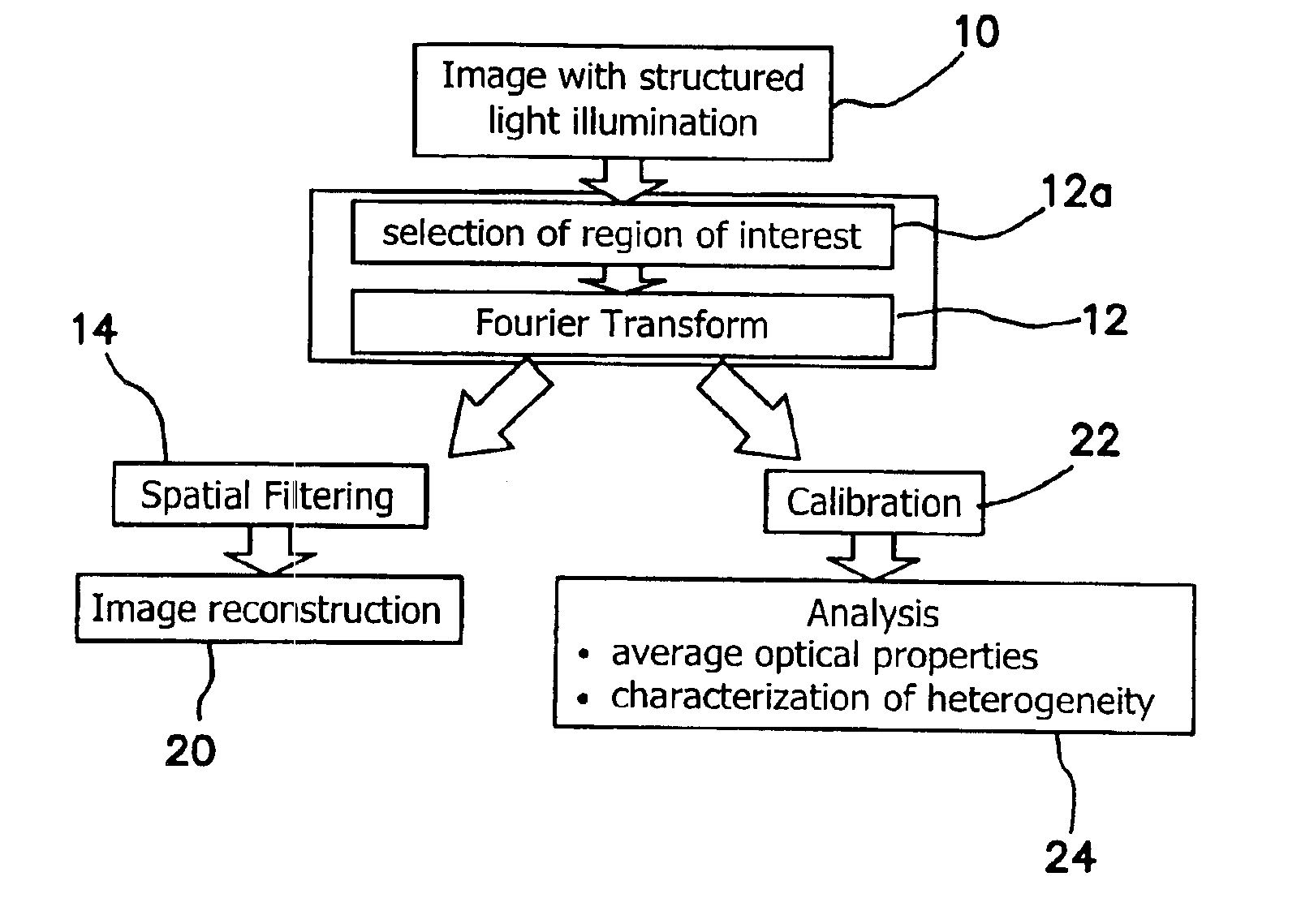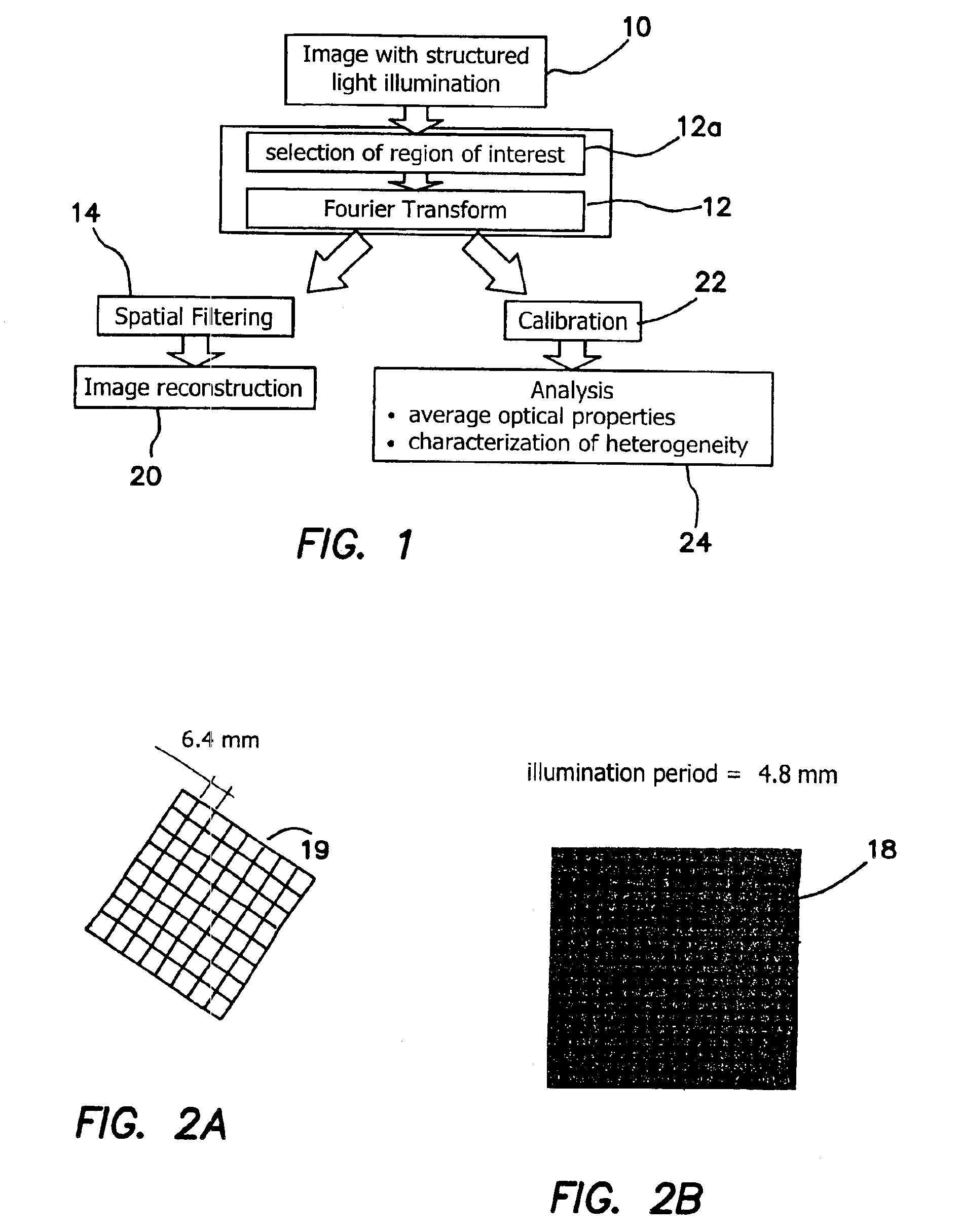Method and apparatus for performing quantitative analysis and imaging surfaces and subsurfaces of turbid media using spatially structured illumination
a spatial structure and illumination technology, applied in the field of optical measurement of turbid media, can solve the problems of affecting the accuracy of the data from the prediction of the model, affecting the accuracy of the data, and difficult to maintain
- Summary
- Abstract
- Description
- Claims
- Application Information
AI Technical Summary
Benefits of technology
Problems solved by technology
Method used
Image
Examples
Embodiment Construction
[0034]Illumination with patterned or structured light, such as described below in connection with FIG. 2b, allows for subsurface imaging of turbid media such as tissue and allows for the determination of the optical properties over a large area. Both the average and the spatial variation of the optical properties can be determined. The invention provides a fast, non-contact, scan-free method to image and quantify the optical properties of a tissue. In general, the method does not have to be a non-contacting methodology, although to be able to perform the method in a non-contact mode is a significantly enhanced benefit and utility.
[0035]The method is based on spatially structured or patterned illumination, and can be thought of as a generalization of spatially-resolved optical measurements with a single source. Moreover, structured or patterned illumination has the advantage of providing for integration of subsurface imaging, quantitative determination of scattering and absorption pr...
PUM
| Property | Measurement | Unit |
|---|---|---|
| depths | aaaaa | aaaaa |
| optical properties | aaaaa | aaaaa |
| depth | aaaaa | aaaaa |
Abstract
Description
Claims
Application Information
 Login to View More
Login to View More - R&D
- Intellectual Property
- Life Sciences
- Materials
- Tech Scout
- Unparalleled Data Quality
- Higher Quality Content
- 60% Fewer Hallucinations
Browse by: Latest US Patents, China's latest patents, Technical Efficacy Thesaurus, Application Domain, Technology Topic, Popular Technical Reports.
© 2025 PatSnap. All rights reserved.Legal|Privacy policy|Modern Slavery Act Transparency Statement|Sitemap|About US| Contact US: help@patsnap.com



